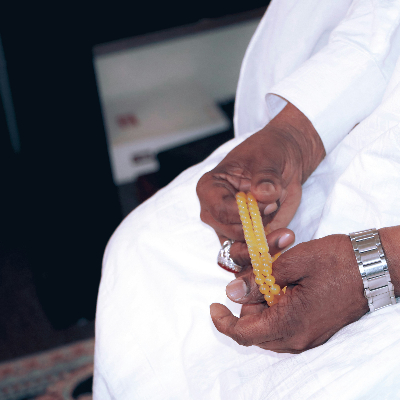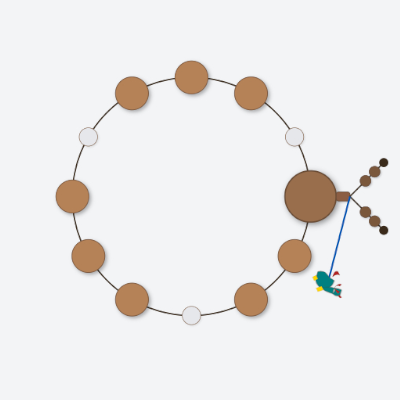Menu
-
-
F.A.Q
- How to identify genuine agarwood chip, natural or cultivated
- How to identify oil injection / absorption fake agarwood beads
- How to know if there are more than one oil in your oil
- How to make your wood bracelet or mala darker
- How to tell if an Agarwood bead sinks WITHOUT sinking it under water?
- How does back flow incense work and how do you burn it?
- Where to start if you don't know what agarwood is ?
- Why are you losing money if you buy seeds and plants?
- Which agarwood incense should I choose?
- Frequently Asked Questions
- Agarwood Related Articles
- Shipping
-
SHOP - Agarwood
-
SHOP - Other Fragrant Wood
-
SHOP - Incense Holder and Burner
-
- FREE Oud Oil guide
- Testimonials
- "Why did you buy this?"
- Contact us
- About Us
- +61430284329
- Login
-
English


"GOT YOU! Disease Causing Culprit. Free Radicals, you will be neutralised"
March 17, 2020 8 min read
Free Radicals and the risks
We are humans. Humans breathe air, eat food and drink water frequently to survive. Inside the air, food and water we consumed, there are many substances.
Among these substances, there are some that become Free Radicals when our bodies metabolise them, according to the Huntington's Outreach Project for Education at Stanford University.
It means the human body will produce these Free Radicals when we breathe, eat and drink, even exercise.
At a moderate level, Free Radicals are beneficial to the healing wound (Mcdonald 2014, University of California San Diego)
However, Free radicals are "hungry" chemical substances. They steal electrons from others close to them.
Most of the time, this action can cause many problems.
Dr Lauri Wright, a registered dietitian and an assistant professor of nutrition at the University of South Florida, said, "Basically, I think of free radicals as waste products from various chemical reactions in the cell that when built up, harm the cells of the body (Szalay Live Science, 2016 )
It works like this. Think of
- Our body like a lake. And
- Inside that lake, there are many fishes (represented many compounds, and molecules in our body)
When our body metabolises, this process creates Free Radicals. Imagine these Freee Radicals as a school of Piranha.
These Piranhas are swimming in that lake, looking for food. And if there was lack of food, in the lake these Piranhas would attack other fishes to satisfy their hunger.
When these Piranhas attacked, they wound other fishes' body parts. These fishes are crippled and unhealthy. If they were left untreated, they will adversely affect other fishes. They might even die. And when too many fishes died, the lake is no longer a healthy environment.

According to Harvard, School of Public Health
"An excessive chronic amount of free radicals in the body causes a condition called oxidative stress, which may damage cells and lead to chronic diseases."
The Better Health Channel of the Victoria Government in Australia agreed. It showed some conditions caused by Free Radicals include:
- deterioration of the eye lens, which contributes to blindness
- inflammation of the joints (arthritis)
- damage to nerve cells in the brain, which contributes to conditions such as Parkinson’s or Alzheimer’s disease
- acceleration of the ageing process
- increased risk of coronary heart disease, since free radicals encourage low-density lipoprotein (LDL) cholesterol to stick to artery walls
- certain cancers, triggered by damaged cell DNA.
So, how do we deal with Free Radicals
Let's continue with the example Piranhas as Free Radicals.
You see, When Piranhas are hungry, they will attack other fishes (fish expert Dr H. R. Axelrod)
Similarly, in our human body where
- "Free Radicals" as "Piranhas" And
- "Food" as "electrons"
"Free Radicals" will attack or steal "electrons" from compounds that are close to them.
When these "electrons" are missing or stolen, it causes cause damage to parts of cells such as proteins, DNA, and cell membranes. The damage process is called "oxidisation"
if there are enough "electrons" for the Free Radicals, there will be minimum damage caused. These electrons are given by Antioxidants
Let's talk about Antioxidants
When we consumed enough Antioxidants, we give enough "food" (electrons) to the "Piranhas" (Free Radicals). And when there is enough food, Piranhas will be unlikely to attack other fishes.
The Antioxidants are known as "electrons donors". They provide electrons to Free Radical, makes it no longer "Free" but a complete radical. And a complete radical won't "steal" electrons from others.
Source: Medical News Today
So how do we get Antioxidants?
Your body can produce it. The human body is an antioxidant producing machine
According to Harvard Health, your body's cells naturally produce some powerful antioxidants, such as alpha-lipoic acid and glutathione.
But human cells are able to produce their own antioxidants that can fight damaging agents (Schmidt 2013)
Eat plenty of antioxidants food- whole food.
We eat healthy food. For example, vegetables and fruits are good sources of antioxidants (Serafini M, Peluso I. 2016).
The other sources of antioxidants are dietary supplements.
However, research has shown little evidence that these dietary supplements are beneficial.
Some research even showed consuming too much of these supplements could be harmful.
Here are some key points from the National Centre for Complementary Health and Integrative Health
And the Diabetes UK 2017 agreed
"The foods and drink that contributed most to a higher dietary antioxidant score were fruits and vegetables, tea and red wine (in moderation), while coffee was excluded from the analysis because it has already been linked to reduced type 2 diabetes risk."
In short, the less processed food, the better benefit they provide to our body.
Here is the quote from Critical Reviews in Food Science and Nutrition (Balunkeswar Nayak, Rui Hai Liu & Juming Tang (2015))
It is apparent that complex mixtures of phytochemicals rather than a single antioxidant in foods are responsible for health benefits due to their additive and/or synergistic effects. It would be biased to measure the antioxidant activity of fruits, vegetables, and grains solely based on the presence of vitamin C or any individual antioxidative compound in raw or processed foods. It has already been reported that vitamin C provides only 0.4% of total antioxidant activity of apples, whereas other phytochemicals including phenolics, flavonoids, and anthocyanins contribute significantly to the total antioxidant activity in apple (Eberhardt et al., 2000). In addition to the investigations focused on measuring total phytochemicals, possible synergistic effects among antioxidative compounds should also be taken into consideration in antioxidant activity of processed foods.
It means vitamin pills or supplements could not replace a balanced diet.
Not all antioxidants work
Most of the antioxidants supplements have little supportive evidence that it can prevent disease
Source: nccih.nih.gov
In 2004, Sports Medicine published a review article about Vitamin Supplementation
"Recent research has found that long-term antioxidant supplementation, in particular with vitamin E, and at high doses, may increase mortality" (McGinley, C., Shafat, A. & Donnelly 2004)
In short, it works "best in combination with other nutrients, plant chemicals, and even other antioxidants."
These nutrients and plant chemicals are available in:
Disease Fighting Food
Below are some examples of antioxidant-rich foods, categorised in Vitamin C, E and Beta-Carotene
Please note they contain more than one Vitamin. These are not supplemented vitamin but whole food with minimum processed
According to MedlinePlus, a service of the National Library of Medicine (NLM), the world's largest medical library
Vitamin C: This vitamin is essential for human growth and development
- Cantaloupe.
- Citrus fruits and juices, such as orange and grapefruit.
- Kiwi fruit.
- Mango.
- Papaya.
- Pineapple.
- Strawberries, raspberries, blueberries, and cranberries.
- Watermelon.
Vitamin E: enhances immune function and prevents clots from forming in heart arteries
- Sunflower Seeds. ...
- Spinach. ...
- Vegetable Oils. ...
- Peanuts. ...
- Avocado. ...
- Almonds. ...
- Shrimp. ...
- Hazelnuts
Read more about Vitamin E here
Beta-carotene: is used to prevent certain cancers, heart disease, cataracts, osteoarthritis, and age-related macular degeneration (AMD).
Foods which are rich in beta-carotene:
- carrots.
- sweet potatoes.
- dark leafy greens, such as kale and spinach.
- romaine lettuce.
- squash.
- cantaloupe.
- red and yellow peppers.
- apricots
We talk enough about food. What about drinks?
You already know about these drinks and chances are you have been drinking them daily. They are tea, and coffee,
- Green tea contains EGCG (epigallocatechin 3 gallate) polyphenols, flavonoids are believed to contribute to the low rates of heart disease in Japan (Forester and Lambert 2011).
- Consumption of coffee may increase glutathione levels and reduce the levels of DNA damage (Martini 2016)
Here is something you may want to know: Agarwood tea (Young Aquilaria leaves)
Young Aquilaria leaves
First, it contains the two potent antioxidants of green tea: Epigallocatechin Gallate (EGCG), Epicatechin Gallate (ECG) (Tay et al 2014).
And
EGCG could improve insulin resistance, memory and decrease obesity (Diabetes UK 2017)
In addition, It contains Vitamin C, E and beta-carotene, Mangiferin and
- genkwanin 5-O-β-primeveroside (1),
- iriflophenone 3,5-C-β-D-diglucoside (2) and
- iriflophenone 3-C-β-D-glucoside (3)
Just like coffee, young Aquilaria leaves increase glutathione levels
"Iriflophenone 3-C-β-D-glucoside showed prominent free radical scavenging activities and could significantly increase mRNA expressions of HO-1, GPx-1, and GR. The findings in this study provide scientific evidence that supports the claimed health benefits of A. crassna leaves." (Natural Product Communication 2017)
The power of one: Agarwood tea (Aquilaria leaves): 1 single ingredient with multiple potent antioxidant compounds
First, these leaves are 100% young Aquilaria Crassna leaves and nothing else
These leaves are hand-picked early morning and lightly roasted to keep the freshness and nutrition.
Once completed, they are sealed in a vacuum bag.
It is a herbal infusion.
There is no extraction, no mixing, no synthetic, no lab-produced substance
BUT
Young Aquilaria leaves, grown in our plantation.
Just like the hardworking farmers, growing their plants the old school way.
Aquilaria leaves (agarwood tea) benefit
According to the Journal of Herbal and Medicine 2017, all the Aquilaria Species contain Antioxidants and additional biological activities
Relieve Inflammation of the joints (arthritis)
This could be due to the flavonoids' presence in the leaves (Wang et al., 2008; Qi et al., 2009; Feng et al., 2011; Ito et al., 2012).
Ethanolic extract of Aquilaria agallocha (synonym Aquilaria malaccensis) leaves has the potential as an anti-arthritic agent (Rahman et al., 2016). Generally, rheumatoid arthritis is caused by the denaturation of protein due to the production of auto-antigens in certain rheumatic diseases.
The presence of chemical constituents such as glycosides, tannins, terpenoids, oleic acids, terpenes and phenolic compounds in the extracts are thought to restrain heat-induced protein denaturation (Rahman et al., 2016).
Aquialaria leaves contain Mangiferin. It can
Act as vasodilators while showing no cytotoxicity
Mangiferin can dilate blood vessels. It allows blood to flow easier. Because of this property, it could be used to treat or prevent high blood pressure
(C) Mangiferin protected vascular endothelium function
Source: Molecular Medicine Report (2018)

Mangiferin is a potent antioxidant available in Aquilaria leaves.
It could be used to stabilise blood sugars
Aquilaria leaves contain mangiferin, iriflophenone 2-O-α-L-rhamnopyranoside,
iriflophenone 3-C-β-D-glucoside and iriflophenone 3,5-C-β- D-diglucopyranoside demonstrate a strong α-glucosidase inhibitory activity. These compounds act as an antidiabetic agent and reduce the blood glucose level by controlling carbohydrate absorption from the intestine (Feng et al., 2011).
Aquilaria Crassna leaves contain Neuritogenic and neuroprotective constituents
According to the Journal of Food Biochemistry,
"In summary, chromatographic separation from the leaves of A. crassna led to the isolation of three phenolic glycosides, genkwanin 5‐O‐β‐primevoside (1), iriflophenone 3,5‐C‐β‐d‐diglucoside (2) and iriflophenone 3‐C‐β‐d‐glucoside (3). Among these isolates, compounds 1 and 2 were shown to be the active principles responsible for the neuroprotective and neuritogenic of A. crassna. However, their exact mechanisms of neuroprotection still need further investigation"
Additional Fun Facts
Did you know extract from agarwood leaves could be used as a green steel corrosion inhibitor?
It means these extracts could be used to slow the rate of corrosion down because they are anticorrosive and antioxidant.
The below image will demonstrate its ability
(a) polished mild steel
(b) mild steel in Hydrochloric acid solution
(c) and (d): mild steel treated with Aquilaria leaves crude extract (ME) and aqueous extract (AE) in Hydrochloric acid solution
Source International Journal of ELECTROCHEMICAL SCIENCE, 9 (2014)
Too complicated? I guessed so, so I will perform something that all of us can understand simply
We all know that if water contact with Iron (Fe), it will rust from oxidisation.
So if a solution prevents the oxidisation, it would be antioxidant.
This experiment would be on Iron (Fe), to demonstrate its antioxidant properties

On the left: Iron paper holder clip in water for 4 days
On the right: Iron paper holder clip in Aquilaira leaves (Agarwood te) for 4 days
Oxidised Iron when contacted with water

Agarwood tea (Aquilaria leaves) cast a protective film over the paper clip.
With the "antioxidant film", these 3 small pieces of iron do not rust. They are not corroded and still in the original condition.
Fancy a cup of agarwood tea?
Click here to learn more
Leave a comment
Comments will be approved before showing up.
Also in News

What is Tasbih? The Deep Meaning of Subhan Allah and the Role of Prayer Beads
November 09, 2025 4 min read










